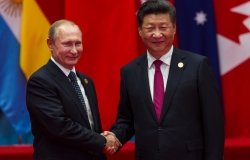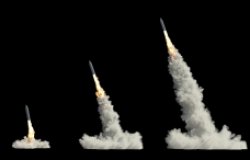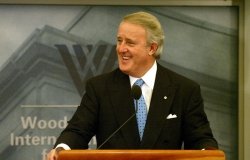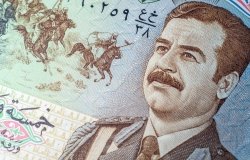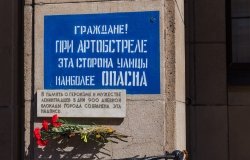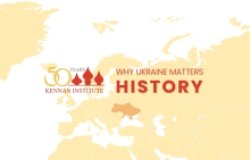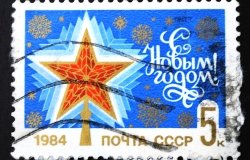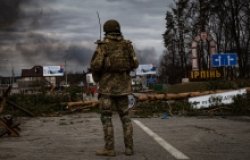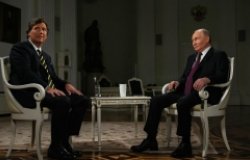The Allies and the Role of Lend-Lease in WWII: The Russian View
Cosponsored by the Russian-American Community Center of Florida, Open Dialogue (Moscow) and the Spiritual Diplomacy Foundation, in this discussion Nikolai Borodin, Director, Museum of the Allies and Lend-Lease in Moscow, will explore the history of the museum and the role of America in the Lend-Lease program during World War II. “The Museum of the Allies and Lend-Lease is a unique, one-of-a-kind museum,” said Borodin. The museum was established inside a former school and has been open for 8 years. Borodin said he wished to honor and show gratitude to the United States and its veterans who rendered aid to the Soviet Union during World War II. “Those years were a very trying time and the aid received from the U.S. was substantial,” he stated. In Russia, the museum is dedicated to the WWII allies but mainly to the American contribution.
Overview
Cosponsored by Russian-American Community Center of Florida, Open Dialogue (Moscow) and the Spiritual Diplomacy Foundation
“The Museum of the Allies and Lend-Lease is a unique, one-of-a-kind museum,” said Nikolai Borodin, Director, Museum of the Allies and Lend-Lease, Moscow at a 29 May 2012 Kennan Institute event. Borodin said he wished to honor and show gratitude to the United States and its veterans who rendered aid to the Soviet Union during World War II. “Those years were a very trying time and the aid received from the U.S. was substantial and timely,” he stated. The museum, which is located in a school in Russian and opened eight years ago, is dedicated to the WWII allies but mainly focuses on the American contribution to the war effort.
The Great Patriotic War, as Russians call World War II, claimed the lives of more than 27 million Soviet citizens. When Putin traveled to Normandy, France to celebrate the 60th VE Day anniversary, he took with him two WWII veterans. Those veterans were members of the organization that ultimately helped to open the Museum the Allies and Lend-Lease. Shortly after Putin’s return from Normandy, the Museum of the Allies and Lend-Lease was given approval to open. The greatest contribution to the museum from the Russian government, according to Borodin, was Putin’s statement at Normandy, where he encouraged citizens to celebrate the aid the U.S. gave to Russia and to move beyond the Soviet practice of denying the importance of lend-lease.
“The process of establishing and opening the museum was difficult,” Borodin explained. After WWII, high level officials in the Soviet government prohibited discussion about the aid the U.S. provided. As a result, few knew what the museum was for or why such a monument existed. Borodin considered this an obstacle for the museum in the early stages of its development. The museum was founded to prove through physical evidence, which visitors could touch and see in person, a part of history long buried. “Thus this is a more accessible way of presenting this history to a larger group of people in order to gain real understanding,” Borodin said. There are many Russians who doubt the U.S. aided the Soviet Union, but numerous products for Russian soldiers were made in America. Borodin hopes that a new generation will become aware of the good relationships and exchanges between the U.S. and Russia in a time when assistance was needed.
The museum received much of its help from war veterans. These veterans and war heroes donate items, share stories, and bring their own unique contributions to the exhibits, said Borodin. The first items ever displayed in the museum were a jeep and ship’s beacon light. K. V. Rokossoviski, son of Soviet Marshall K. K. Rokossovski, donated his father’s American made WWII Willys Jeep, which is still operational and in use by the Lend-Lease museum. Borodin discovered the ship’s beacon light himself thirty-two years ago on the seashore at one of the first WWII lend-lease cargo and shipment sites in the Soviet Union. The light was possibly from an American or British ship, which may have sunk near the coast. The museum also has a collection of uniform buttons that carry Soviet symbols on the front, but are stamped “Made in Chicago” on the back. There is also a special exhibit celebrating the heroics of American Joseph Beyrle, a soldier who was shot down over Russia by German soldiers. Beryle went on to fight in Russian units, and is the father of former U.S. Ambassador to Russia John Beryle.
Not all of the aid sent to the Soviet Union was military in nature. There were humanitarian supplies such as food, clothes, and toys sent to Russia from America. “Everything that was needed or necessary was supplied. Even items not wanted in America but were useful to the Soviets,” Borodin stated. For example, Studebakers, which fell out of popularity in America, functioned very well for the Soviets during WWII and were fondly remembered by Soviet soldiers. Borodin acknowledged that other items that might have been useful could not be supplied given their classified and secret nature. “This is natural because every country has a right to protect its technologies,” said Borodin. He explained that newer technologies would have also carried certain burdens such as low supply but high requirements for training and maintenance.
Many Americans visit the Museum of the Allies and Lend-Lease, see the results of their efforts, and have given very positive responses. Borodin would like to expand the museum and convey the importance of lend-lease to Americans and Russians alike. During the period of lend-lease, “whatever was asked for was received,” Borodin concluded.
By Thea Cooke
Blair Ruble, Director, Kennan Institute
The Kennan Institute speaker series is made possible through the generous support of the Title VIII Program of the U.S. Department of State.
Speaker
Hosted By

Kennan Institute
The Kennan Institute is the premier US center for advanced research on Russia and Eurasia and the oldest and largest regional program at the Woodrow Wilson International Center for Scholars. The Kennan Institute is committed to improving American understanding of Russia, Ukraine, Central Asia, the Caucasus, and the surrounding region though research and exchange. Read more
Thank you for your interest in this event. Please send any feedback or questions to our Events staff.
